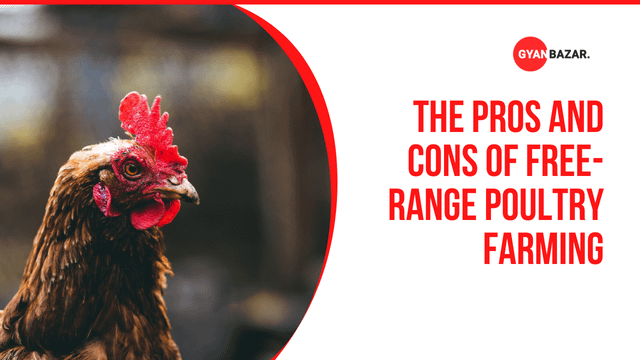Free-range poultry farming is a method of raising poultry birds in an environment where they have access to an outdoor space to roam and forage. This method of farming is becoming increasingly popular due to the growing interest in animal welfare, environmental sustainability, and healthier food options. However, as with any farming method, there are both pros and cons to free-range poultry farming.
Pros:
Better animal welfare: One of the biggest advantages of free-range poultry farming is that it provides better animal welfare. Poultry birds are able to move around freely, engage in natural behaviors like scratching, foraging, and dust bathing, and have access to fresh air and sunlight. This can result in healthier and happier birds, which can lead to higher-quality meat and eggs.
Healthier food options: Free-range poultry farming can also result in healthier food options for consumers. Poultry birds that are allowed to forage on grass and insects tend to have a more diverse and nutrient-rich diet, which can lead to higher levels of vitamins and omega-3 fatty acids in their meat and eggs.
Environmental sustainability: Free-range poultry farming can be more environmentally sustainable than conventional farming methods. Poultry birds that are allowed to forage on pasture can help to maintain healthy soil, reduce the need for synthetic fertilizers, and decrease the environmental impact of waste disposal.
Cons:
Increased risk of predation: One of the biggest challenges of free-range poultry farming is the increased risk of predation. Poultry birds that are allowed to roam outside are more vulnerable to predators like foxes, hawks, and coyotes. This can result in higher rates of bird loss, which can be costly for farmers.
More difficult to manage: Free-range poultry farming can also be more difficult to manage than conventional farming methods. Farmers need to ensure that their birds have access to fresh water, shelter, and food while also protecting them from predators and disease. This requires more labor and attention than conventional methods, which can increase the cost of production.
Potential for environmental damage: Although free-range poultry farming can be more environmentally sustainable than conventional methods, there is also the potential for environmental damage. Poultry birds that are allowed to forage on pasture can damage the vegetation and soil, particularly if the number of birds exceeds the carrying capacity of the land.
Conclusion:
Free-range poultry farming has both pros and cons, and farmers need to carefully consider these factors when deciding whether to adopt this method of farming. While it can provide better animal welfare, healthier food options, and environmental sustainability, it also comes with challenges like increased risk of predation, more difficult management, and potential for environmental damage. Ultimately, the decision to adopt free-range poultry farming should be based on a thorough evaluation of the costs and benefits, as well as the values and goals of the individual farmer.

